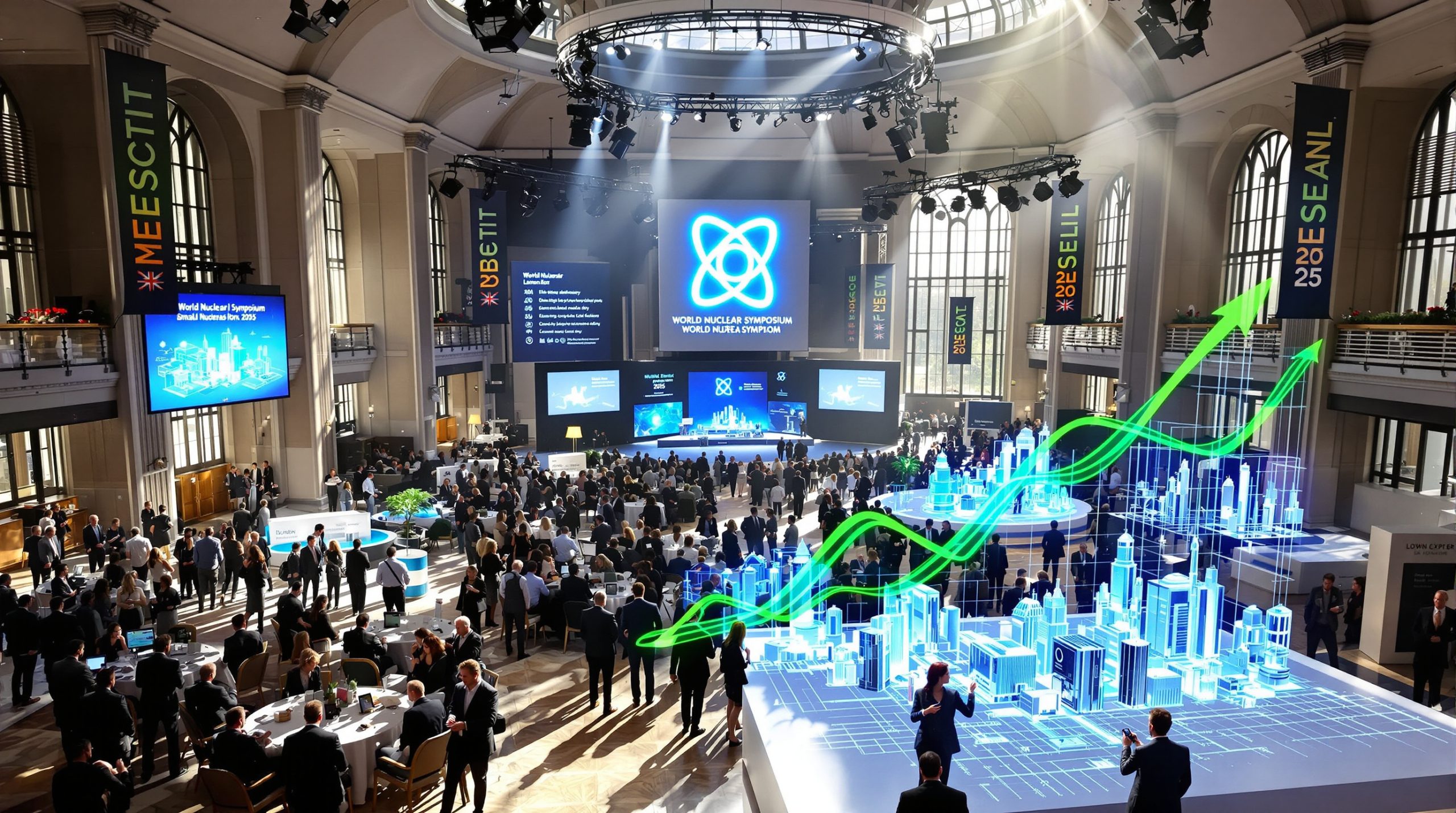China's Evolving Approach to Rare Earth Controls
China has implemented a significant shift in its rare earth management strategy for 2025, characterized by unprecedented secrecy and delayed announcements. Unlike previous years when quota announcements were made publicly in the first quarter, the 2025 quotas were issued discreetly to companies, with explicit instructions not to disclose the figures due to "security reasons," according to industry sources reported by Mining Technology (July 2025).
This radical departure from China's typically transparent quota system signals Beijing's intensifying control over these strategic resources amid growing geopolitical tensions.
"The delay in this year's quotas is partly attributed to a proposal introduced in February to include imported ore in the quota system," noted mining industry analysts following the developments. This move represents a significant evolution in China's approach to resource management.
The Ministry of Industry and Information Technology (MIIT), which oversees quota allocation, has maintained silence regarding the change in disclosure practices, further highlighting the strategic significance of these materials in China's industrial and geopolitical planning.
Understanding China's Quota System Evolution
China's rare earth quota system, established in 2006, has undergone dramatic transformation in recent years. Perhaps most notably, eligible companies have been consolidated from six to just two state-owned enterprises: China Rare Earth Group and China Northern Rare Earth Group High-Tech.
This consolidation represents far more than administrative streamlining—it reflects Beijing's strategic move to centralize control over the industry's production and distribution channels, giving the government unprecedented leverage over global supply chains.
The quotas themselves tell a revealing story about China's long-term strategy. In 2024, China set mining quotas at 270,000 tonnes, representing growth of just 5.9%—a dramatic deceleration from the 21.4% growth seen in 2023. Similarly, smelting and separation quotas increased to 254,000 tonnes, a modest 4.2% rise compared to 2023's 20.3% increase.
This systematic slowing of production growth suggests China is taking a more measured, strategic approach to managing these critical minerals energy transition for maximum long-term leverage rather than short-term economic gain.
What's New in China's 2025 Rare Earth Policy?
Proposed Inclusion of Imported Ore
The most significant development in China's 2025 rare earth policy is the February proposal to incorporate imported rare earth ore into the existing quota system. This represents a fundamental shift in China's resource management approach, extending state control beyond domestic mining to international supply chains.
This proposal has generated significant concern among import-dependent processing companies who fear potential restrictions on their feedstock supply. Many of these companies have built business models around processing imported materials, particularly from neighboring countries in Southeast Asia.
"This proposal was met with resistance from import-dependent companies concerned about potential restrictions on their feedstock supply," reported Mining Technology (July 2025).
The inclusion of imported materials under the quota system would give Beijing unprecedented control over not just Chinese rare earth resources, but potentially the global rare earth supply chain, considering China rare earth dominance in processing approximately 85% of the world's rare earth elements.
Industry Resistance to New Regulations
The pushback from companies heavily reliant on imported materials illustrates the delicate balance China must maintain between asserting control over strategic resources and supporting its domestic manufacturing base.
Many processing companies have invested heavily in facilities designed specifically to handle imported ores with different mineral profiles than domestic Chinese sources. Restricting these imports could force costly reconfigurations of processing facilities or even render some operations economically unviable.
This resistance highlights an important tension within China's industrial policy: the desire for strategic control sometimes conflicts with the operational needs of the very companies that have built China's dominance in the rare earth value chain.
Industry analysts suggest that the final implementation may include compromise measures, such as preferential quota allocations for companies processing domestically-sourced materials while maintaining some flexibility for import-dependent operations.
How Do China's Rare Earth Quotas Impact Global Markets?
Strategic Importance of Rare Earth Elements
Rare earth elements (REEs)—comprising 17 metallic elements on the periodic table—serve as critical components in numerous high-tech applications due to their unique magnetic, luminescent, and electrochemical properties. Despite their name, these elements are relatively abundant in the Earth's crust but rarely found in concentrated, economically viable deposits.
Their strategic importance spans multiple sectors:
- Advanced electronics: Smartphones, computers, and display technologies
- Military defense systems: Precision-guided munitions, radar systems, and electronic warfare
- Renewable energy infrastructure: Wind turbine generators and solar panel components
- Electric vehicle production: High-performance magnets for motors and battery technology
- Medical imaging equipment: MRI machines and specialized diagnostic tools
This wide-ranging technological significance explains why global supply chains are closely monitored, particularly when policy changes occur in China, which controls approximately 60% of global mining production and over 85% of processing capacity.
Historical Context of Production Controls
China's quota system provides a window into its strategic thinking about rare earth management. The declining growth rates in quota allocations—from 21.4% in 2023 to just 5.9% in 2024 for mining quotas—suggest a deliberate strategy to conserve resources while maintaining market dominance.
The table below illustrates this clear trend of decelerating growth:
| Year | Mining Quota (tonnes) | Annual Growth (%) | Smelting Quota (tonnes) | Annual Growth (%) | Eligible Companies |
|---|---|---|---|---|---|
| 2022 | 210,000 | – | 202,000 | – | 6 |
| 2023 | 255,000 | 21.4% | 243,000 | 20.3% | 6 |
| 2024 | 270,000 | 5.9% | 254,000 | 4.2% | 2 |
| 2025 | Undisclosed | Undisclosed | Undisclosed | Undisclosed | 2 |
This progressive slowdown in quota growth, coupled with the consolidation of control to just two state-owned enterprises, demonstrates China's measured approach to controlling output growth while maintaining leverage over global markets.
Why Is China Tightening Control Over Rare Earths?
Geopolitical Leverage in Trade Negotiations
China's strategic management of rare earth resources has become increasingly important in its trade relations with the United States and European Union. By controlling the flow of these critical materials, China gains significant leverage in broader trade negotiations.
"China has previously leveraged its control over rare earths, adding several elements to its export restriction list in response to US tariffs impact investment markets," reported Mining Technology (July 2025).
This leverage extends beyond simple trade advantages. Rare earths play a crucial role in advanced defense systems, making them a matter of national security for many countries. China's dominance in this sector provides it with influence that extends into geopolitical and security realms.
The shift toward greater secrecy in quota allocations suggests an increasing recognition of rare earths as a strategic resource rather than merely an economic one. By treating quota information as sensitive for "security reasons," China is signaling that it views these materials through a national security lens.
Response to International Trade Tensions
Recent policy shifts can be viewed partly as a response to ongoing trade tensions. China and rare earth quotas for 2025 represent a strategic response to international pressures, with China having previously added several rare earth elements to its export restriction list following US tariff increases, demonstrating how these resources can be weaponized in trade disputes.
The potential inclusion of imported ores in the quota system may also be a preemptive measure to prevent circumvention of export controls. By bringing imported materials under the same regulatory framework as domestic production, China can ensure that export restrictions remain effective even if companies attempt to increase processing of foreign ores.
This comprehensive approach to controlling the entire rare earth value chain—from mining to processing to export—gives China maximum flexibility in responding to perceived economic threats or applying pressure in trade negotiations.
What Are the Global Implications of China's Rare Earth Strategy?
Supply Chain Vulnerabilities
China's discreet approach to quota announcements and potential inclusion of imported materials in the quota system creates significant uncertainty for international manufacturers dependent on rare earth supplies. This uncertainty may accelerate efforts to develop alternative supply chains outside China's sphere of influence.
The lack of transparency in quota allocations makes production planning more challenging for global manufacturers. Without clear visibility into supply availability, companies may face difficulty forecasting costs and ensuring consistent material availability for their manufacturing processes.
This uncertainty is particularly problematic for industries with long development cycles, such as defense contractors and automotive manufacturers, who must make materials decisions years before products reach the market.
Impact on Global Manufacturers
Companies in high-tech manufacturing sectors face potential disruptions as China's policies evolve. Industries particularly vulnerable include:
- Automotive manufacturers: Electric vehicle producers rely heavily on neodymium, praseodymium, and dysprosium for high-performance magnets in motors
- Wind energy companies: Permanent magnet generators used in wind turbines require significant quantities of rare earth elements
- Electronics manufacturers: Consumer electronics from smartphones to laptops depend on rare earths for components ranging from speakers to vibration motors
- Defense contractors: Advanced weapons systems and communications equipment incorporate rare earth elements in various critical components
The opacity surrounding quota allocations makes production planning more challenging and may drive up costs as companies seek to secure supplies in an uncertain environment through stockpiling or long-term contracts at premium prices.
How Are Other Countries Responding to China's Rare Earth Dominance?
Diversification Efforts
Many countries and companies are actively pursuing diversification strategies to reduce dependence on Chinese rare earth supplies. These efforts include:
- Developing new mining projects outside China in locations including Australia, the United States, Canada, and Greenland's critical minerals resources
- Investing in recycling technologies to recover rare earths from electronic waste, which can contain concentrations higher than some natural deposits
- Researching alternative materials that could replace rare earths in certain applications, such as iron-nitride magnets or high-temperature superconductors
- Creating strategic reserves to buffer against supply disruptions, similar to petroleum reserves maintained by many countries
While these diversification efforts show promise, they face significant challenges. Developing new mines requires overcoming environmental concerns, high capital costs, and lengthy permitting processes. Meanwhile, China's established processing infrastructure gives it cost advantages that new entrants struggle to match.
Strategic Partnerships and Investments
Countries concerned about rare earth supply security are forming strategic partnerships and making investments to develop alternative supply chains. These collaborative efforts aim to create more resilient supply networks that are less vulnerable to disruption from Chinese policy changes.
Examples include:
- Government-backed financing for rare earth mining and processing projects
- Public-private partnerships to develop recycling technologies and facilities
- International cooperation agreements to share geological expertise and processing technology
- Research consortia focused on developing substitute materials for critical applications
Despite these efforts, establishing competitive alternative supply chains remains challenging due to China's scale advantages, technical expertise, and established infrastructure in the rare earth sector.
What Should Stakeholders Monitor Going Forward?
Key Indicators to Watch
Industry stakeholders should closely monitor several indicators to anticipate further developments in China's rare earth strategy:
- Official statements from China's Ministry of Industry and Information Technology regarding quota allocations and policy changes
- Changes in export patterns and pricing for rare earth materials, which may signal shifts in availability before official announcements
- Developments in corporate consolidation within China's rare earth sector, which could indicate further centralization of control
- Shifts in import policies for rare earth ores and concentrates, particularly from Southeast Asian sources
- Technological advancements that could affect rare earth demand or processing efficiency
Tracking these indicators can provide early warning of potential supply disruptions or policy changes that might affect material availability and pricing.
Potential Future Policy Directions
Based on current trends, China may continue to increase its control over rare earth resources through:
- Further consolidation of production under state-owned enterprises to enhance central control
- Enhanced environmental regulations that limit production while addressing legitimate ecological concerns
- More sophisticated export controls targeting specific applications rather than materials broadly
- Integration of domestic and imported materials under a unified management system to prevent regulatory circumvention
The trajectory suggests China is moving toward treating rare earths less as commercial commodities and more as strategic resources to be managed for national advantage, similar to how some nations manage petroleum reserves. Furthermore, as reported by Business Standard, China's tightening grip on the rare earth sector through silent quota releases demonstrates its commitment to maintaining control over these critical resources.
FAQ: China's Rare Earth Quotas
What are rare earth elements and why are they important?
Rare earth elements comprise 17 metallic elements on the periodic table that, despite their name, are relatively abundant in the Earth's crust but rarely found in concentrated, economically viable deposits. They're crucial for manufacturing high-tech products due to their unique magnetic, luminescent, and electrochemical properties.
The most critical rare earths include neodymium and praseodymium (used in powerful permanent magnets), dysprosium and terbium (used in magnets for high-temperature applications), and europium and yttrium (used in phosphors for displays and lighting). These elements enable technologies that are smaller, lighter, more efficient, and more powerful than alternatives.
How much of the global rare earth supply does China control?
China dominates the global rare earth supply chain, controlling approximately 60% of global mining production and over 85% of processing capacity. This concentration gives China significant influence over global markets and technology development pathways dependent on these materials.
While other countries have rare earth deposits, China's decades of investment in processing technology and infrastructure—coupled with historically less stringent environmental regulations—have allowed it to establish a dominant position throughout the value chain. According to a recent report by NPR, China has created a virtual chokehold on the rare earths industry through strategic investments and policy decisions.
Are there viable alternatives to Chinese rare earth supplies?
While alternative sources exist in countries like Australia, the United States, and Canada, developing competitive supply chains outside China remains challenging due to environmental concerns, high capital costs, and China steel and ore challenges that affect broader mineral markets. However, increasing investment in these alternatives is gradually improving supply diversity.
The most advanced non-Chinese producer, Lynas Rare Earths, operates mines in Australia and processing facilities in Malaysia, but its scale remains small compared to Chinese operations. New projects in the United States, Canada, and elsewhere face lengthy development timelines and significant financial hurdles.
Recycling presents another alternative source, with electronic waste containing concentrations of some rare earths higher than found in natural deposits. However, current recycling technologies and economics limit recovery rates, though research continues to improve viability.
How might China's rare earth policies affect consumer technology prices?
Restrictions or uncertainties in rare earth supplies could potentially increase costs for manufacturers of consumer electronics, electric vehicles, and other high-tech products. These increased costs may eventually be passed on to consumers, though the impact would likely be modest as rare earths typically constitute a small portion of total product costs.
For example, the rare earth magnets in a typical smartphone represent less than 1% of the device's total cost. However, for products like electric vehicles, where rare earth content is higher, the impact could be more significant, potentially adding hundreds of dollars to manufacturing costs if prices spike dramatically.
Companies may also respond by redesigning products to use fewer rare earths or alternative materials, potentially affecting performance characteristics in ways that consumers might notice in high-performance applications.
Ready to Catch the Next Major Mineral Discovery?
Discovery Alert's proprietary Discovery IQ model instantly notifies investors of significant ASX mineral discoveries, converting complex data into actionable insights before the broader market reacts. Explore historic examples of exceptional returns by visiting Discovery Alert's dedicated discoveries page and position yourself ahead of the market.




